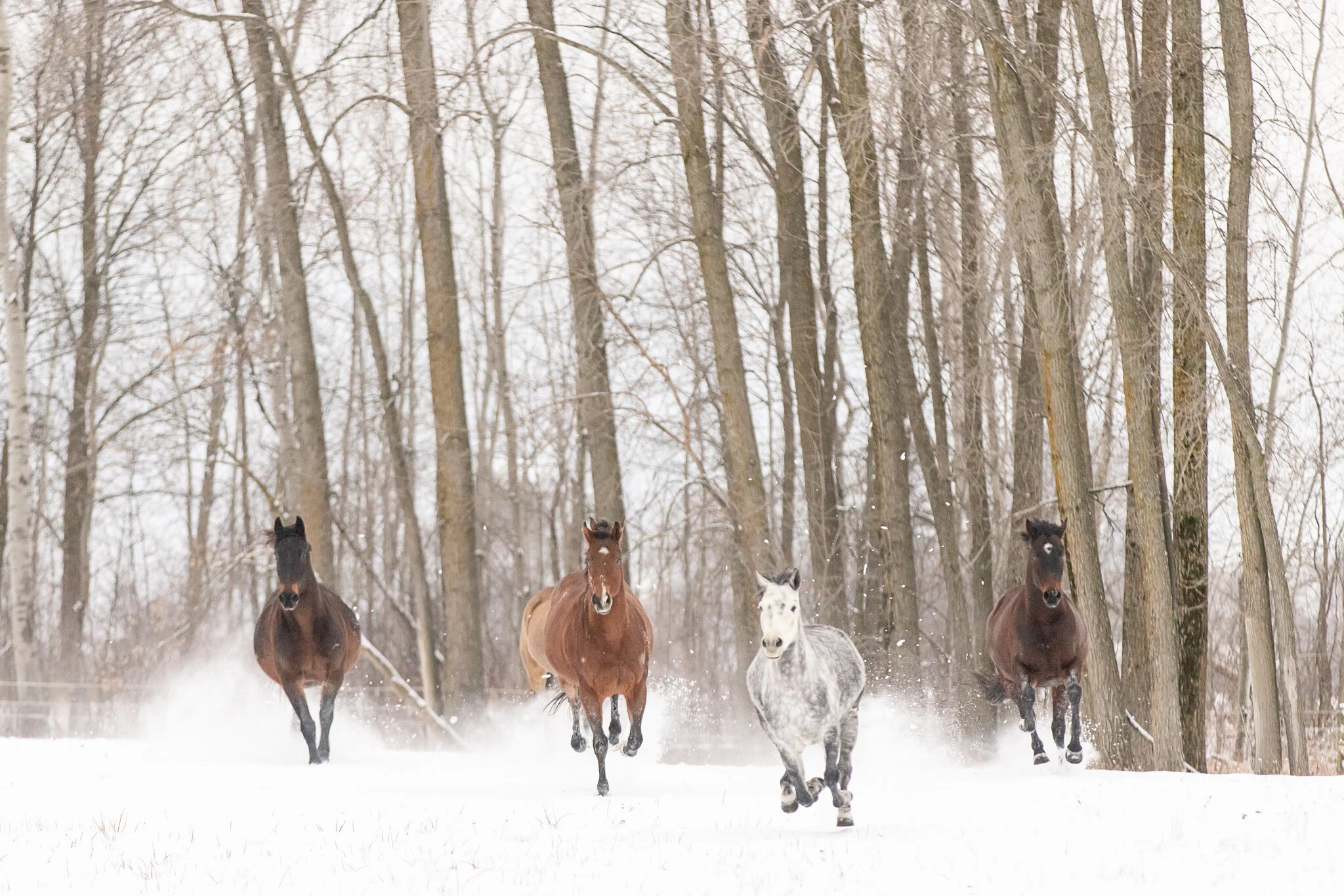5 of my tips for Photographing galloping horses
Wisconsin Horse Photographer
How to photograph galloping horses
If you love all things equine like I do, you no doubt have some pictures of your favorite horse (or horses) saved to your phone, framed around your house, or frequently making appearances on your social media. However, when it comes to taking pictures on your own, some may grow frustrated with the quality of their images. This can be especially true when trying to capture a horse in motion.
While they have certainly improved in the past few years, phone cameras can tend to produce blurry, grainy photos of a galloping horse. And even with the right equipment, getting it just right can still be a challenge. But don't be discouraged—equestrian photography can be a rewarding hobby while producing results that you can cherish and share. As someone who was once a beginner myself, I have learned an incredible amount over the years and would love to share with my readers five of my favorite tips for photographing a galloping horse.
Observe horses run naturally
Keep the background clean
Pick the right angle for the horse
Plan the Photo Before Taking the Picture
Envision how you want the final result. Observe the horse for a while, watching its movements while detecting both its confirmation and discipline patterns. Plan your background before you start shooting and have the horse in a position that enables them to coincide with your desired shot.
Keep the Background Clean
Even if you press the shutter and capture the perfect stride, having any number of distracting items behind the horse is the easiest way to ruin an otherwise beautiful photo. While one can always edit background photos, I always recommend taking the extra time to ensure you get it right during the session. Become familiar with the location, find your favorite spots, and be prepared to have the horse moving at the right speed by the time it reaches your prime location.
Remember Conformation
The majority of horses will have their faults, and it is not the photographer's job to manipulate a horse into perfect confirmation. However, a photographer has a responsibility to represent the subject at its absolute best. One of the best ways to find the horse's best side is to experiment with angles. A variety of angles will help you achieve the best representation of a horse in its galloping stride.
Use Lighting to Your Advantage
Flattering light looks good on everyone, and this rule applies to a galloping horse. Soft and natural light is ideal for photographing a horse in action, and utilizing backlighting can emphasize the depth between the subject and background, creating an immersive feel. When looking to highlight muscles, direct lighting will best do the trick, but look for a balance while avoiding harsh contrasts.
Practice, Practice, Practice
You're equipped with the right tools, some new tips, and a beautiful horse, and now it’s time to get that perfect picture, right? Wrong! You aren't likely to get that dream shot on your first try, but you will be one step closer to your perfect attempt. So, don't get discouraged! Experiment with things like lighting and angles, and remember that regular practice is imperative to success. Step outside your comfort zone and remember to ask for constructive criticism. In no time, you'll have a collection of photographs you'll be proud to call your own.



